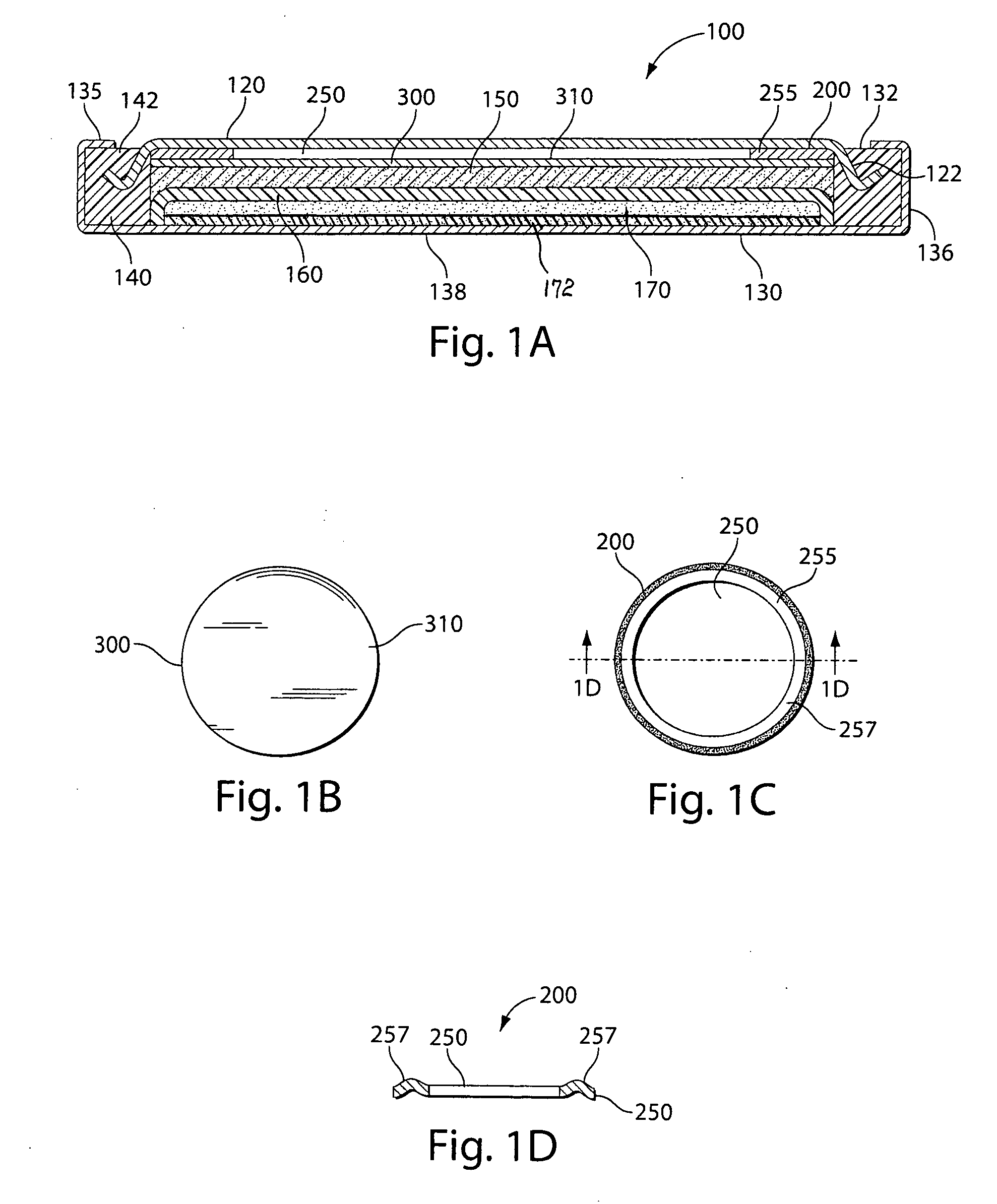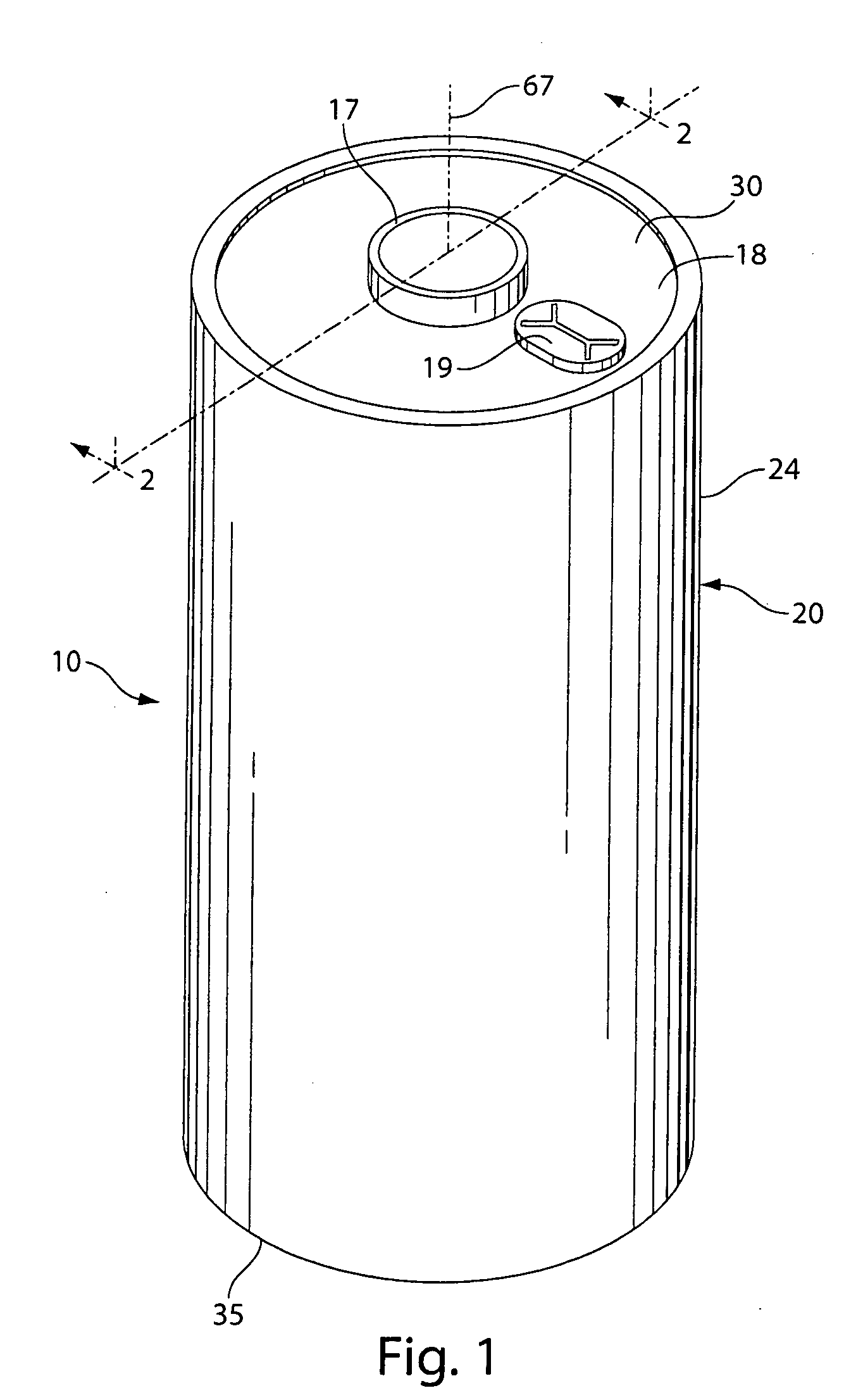Lithium cell with cathode containing iron disulfide
- Summary
- Abstract
- Description
- Claims
- Application Information
AI Technical Summary
Benefits of technology
Problems solved by technology
Method used
Image
Examples
example
Comparative and Experimental Test Lithium Coin Cells with Cathode Comprising FeS2
[0075]The Comparative and Experimental Test Li / FeS2 coin cells 100 (FIG. 1A) were prepared as follows:
Comparative and Experimental Test Coin Cell Assembly:
[0076]A coin shaped cathode housing 130 of aluminum plated steel and a coin shaped anode housing 120 of nickel plated steel is formed of a similar configuration shown in FIG. 1A. The finished cell 100 had an overall diameter of about 20 mm and a thickness of about 3 mm. (This is the size of a conventional ASTM size 2032 coin cell.) The weight of FeS2 in the cathode housing 130 was 0.0232 g. The lithium in the anode housing 120 was in electrochemical excess.
[0077]In forming each cell 100 a plastic insulating of ring shape 140 was first fitted around the side wall 122 of anode housing 120 (FIG. 1A). A spring ring 200 of stainless steel was placed against the inside surface of the anode housing 120. Ring 200 is inserted into anode housing 120 without t...
PUM
 Login to View More
Login to View More Abstract
Description
Claims
Application Information
 Login to View More
Login to View More - R&D
- Intellectual Property
- Life Sciences
- Materials
- Tech Scout
- Unparalleled Data Quality
- Higher Quality Content
- 60% Fewer Hallucinations
Browse by: Latest US Patents, China's latest patents, Technical Efficacy Thesaurus, Application Domain, Technology Topic, Popular Technical Reports.
© 2025 PatSnap. All rights reserved.Legal|Privacy policy|Modern Slavery Act Transparency Statement|Sitemap|About US| Contact US: help@patsnap.com



